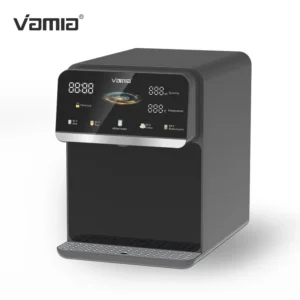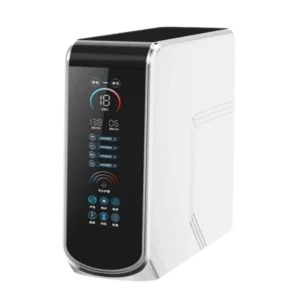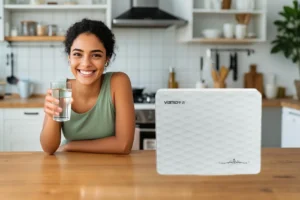A Complete Guide to Water Purifier Filter Replacement
Regular filter replacement is essential for maintaining your purifier’s effectiveness. Below is a detailed, step-by-step process to ensure
you replace filters safely and efficiently, regardless of your system type.
you replace filters safely and efficiently, regardless of your system type.
Signs It’s Time to Replace Filters
- Reduced Water Flow: Clogged filters restrict water pressure, indicating they’re saturated with contaminants.
- Altered Taste or Odor: Filters nearing the end of their lifespan may fail to remove chlorine, metals, or organic compounds, leading to unpleasant flavors.
- Indicator Lights/Alerts: Many modern purifiers have digital displays or LED lights that signal when filters reach 75–100% capacity.
- Expired Warranty Period: Most manufacturers recommend replacing filters every 6–12 months, depending on usage and water quality.

Before You Begin
- Prepare Replacement Filters: Ensure you have the correct type (e.g., carbon, RO membrane, UF cartridge) and check compatibility with your model.
- Shut Off Water and Power: For systems with electrical components (e.g., UV lamps or RO pumps), unplug the unit and turn off the water supply.
- Gather Supplies: Wrench, towels, bucket (to catch spills), and gloves (optional for messy filters).
Step-by-Step Replacement Process
1. Standard Cartridge Filters (AC/UF Systems)
- Locate the Filter Housing: Under the sink or within the purifier’s main compartment.
- Relieve Pressure: Press the system’s pressure-release button (if available) or turn on the faucet to drain water and reduce internal pressure.
- Remove the Old Filter: Unscrew the housing counterclockwise. If stuck, use a wrench with a cloth to avoid scratching. Dispose of the old filter
responsibly—never toss it in regular trash, as it contains trapped contaminants. - Install the New Filter: Rinse the new cartridge under cold water for 30 seconds (if recommended by the manufacturer) to remove any
- manufacturing residues. Insert it into the housing, ensuring it’s seated properly.
- Reattach and Flush: Screw the housing back on and turn on the water. Let it run for 5–10 minutes to flush out air bubbles and carbon
- dust. Discard the initial water.

2. Reverse Osmosis (RO) Membrane Replacement
- Empty the Storage Tank: Open the faucet to drain all water from the tank, as pressure can hinder removal.
- Access the Membrane Housing: Located near the pre-filters; unscrew the cap and pull out the old membrane (a long, cylindrical tube).
- Install the New Membrane: Lubricate the O-ring with food-grade glycerin (provided in most kits) to ensure a tight seal. Insert the new membrane
with the arrow pointing in the direction of water flow (usually indicated on the housing). - Resume Operation: Reattach the housing, turn on the water and power, and flush the system for 30 minutes to activate the new membrane.
3. UV Lamp Replacement
- Unplug and Disassemble: Power off the unit and remove the protective casing around the UV lamp.
- Remove the Old Lamp: Gently pull it out, avoiding contact with the bulb (oils from hands can reduce its efficiency).
- Install the New Lamp: Insert the new bulb, secure the casing, and plug the unit back in.
Post-Replacement Best Practices
- Reset Filter Timers: On smart purifiers, update the filter life counter in the app or control panel.
- Recycle Old Filters: Many brands offer recycling programs for cartridges. Check their websites for drop-off locations or mail-back options.
- Test Water Quality: Use a TDS meter or pH strip to confirm that the new filters are effectively reducing contaminants.
Water Purifier Factory, Water Purifier For Home, Water Purifier Machine,Water Purifier, Water Filter Purifier System
By following these steps, you’ll ensure your purifier continues to deliver clean, safe water while maximizing its lifespan. Regular maintenance not only
protects your health but also prevents costly repairs from neglected filters.
A Complete Guide to Water Purifier Filter Replacement

